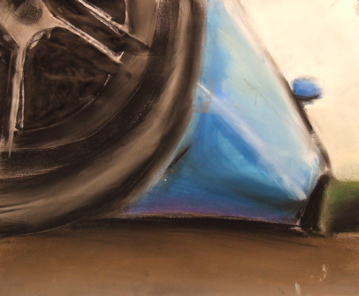
I hate to start this column every week by thanking people like it’s a Borscht Belt nightclub, but Teaching With Contemporary Art is off to a great start in its first month and I want to express my appreciation to those who have contributed their ideas and perspectives. Last week’s column featured comments from Nate Morgan, William Adkins, Jennifer O’Connor, Susan Rotilie and Dr. Mary Jane Zander. Please invite others to weigh in as we build this conversation together.
When the column started a month ago, I initially wanted to get an idea of whether visual arts educators in K-12 settings felt that too much emphasis was being placed on production instead of getting students to understand and engage with art, specifically contemporary art.
One thing has become clear….nothing is clear. Nothing is clean-cut or even close to being called universal, which I didn’t exactly expect. I have spoken to and emailed art educators in a dozen different settings since the column began and there are countless situations that affect the amount of time a teacher can devote to getting students better able to engage with art through discussion and writing. Some of those I spoke with even took issue with the fact that perhaps I was assuming if a student was involved in producing works of art that they weren’t intellectually engaged—being able to describe the process and decisions that led to the finished work. I apologize. I just can’t get around the idea that sometimes we shy away from getting kids to talk about art because it’s……well…..difficult. It’s hard to plan. It’s hard to organize. It’s hard to manage. It can drive you crazy if one or two students monopolize the entire conversation. It can drive you even more crazy if apathy takes over and there’s nothing but the sound of fluorescent lighting after we hit them with that big, essential question. But it’s worth it.
When I think about the art and artists that have helped me over this hurdle—works of art and artist profiles on Art:21—I think of a few instances that stand out. For example, sharing the work of Ann Hamilton during Season 1. The Hamilton segment affected me in such a way that I wanted to share it with everyone. So I did. My students saw it. My colleagues saw it. We talked about how someone who could construct such beautiful pictures could simultaneously construct subtle and breathtaking installations. We talked about how she flipped photography into a bizarre time zone by taking pictures with her mouth. We talked about the fact that styles are hard to define in contemporary art.
And this was just the beginning.
Many of you have lived through instances like these, no? You’re here, in most cases, because you’ve had some experience with the series.
Is there an artist or a work of art that has been featured that has made your students or colleagues consider visual art from a completely new perspective? Has the teaching or learning changed as a result? While I’ve got plenty to share, I’m going to take a breather and let you take over for a while.
Ant’s Eye View illustration by Reid Parsekian, age 16



